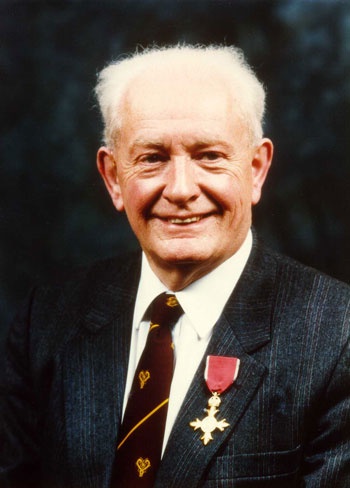The pioneering medical physicist whose team led the world with their breakthroughs in medical imaging has passed away at the age of 94.
Professor John Mallard played a crucial role in the development of two of the world's most important medical technologies – Magnetic Resonance Imaging (MRI) and Nuclear Medicine Imaging which includes Positron Emission Tomography (PET).
Under his leadership, the University of Aberdeen team built the first whole-body MRI scanner which Aberdeen clinicians were then able to use to carry out the world's first body scan of a patient from Fraserburgh.
MRI is now used all over the world today in the diagnosis and treatment of cancer, dementia, a wide range of other conditions and injuries.
Professor Mallard was also a champion of PET imaging even though the technology was still very much in its infancy at the time. Appointed the University’s first Professor of Medical Physics in 1965, in his inaugural lecture shortly after joining Aberdeen, Professor Mallard predicted PET would become one of the most powerful tools for studying human diseases, which would prove correct.
Professor Mallard brought Scotland's first PET facility to Aberdeen by leading a national fundraising campaign to pay for a building next to Woodend Hospital to house a second-hand scanner which he had negotiated from researchers in London.
The old facility at Woodend has long since been replaced by the state-of-the-art John Mallard Scottish Pet Centre at Aberdeen Royal Infirmary which at the time was the only PET centre in Scotland.
Professor Mallard – who retired from the University in 1992 –was awarded the OBE in the Queen’s Birthday Honours List the same year and was awarded the Freedom of the City of Aberdeen in 2004 for his pioneering work in medical imaging.
He also received honours including the Landau Memorial Plaque of the American Association of Physicists in Medicine; the Academic Enterprise Competition Prize of the British Technology Group; the Royal Society Wellcome Prize and Gold Medal; the George Van Hevesey Memorial Lecture Medal; The Royal Society Mullard award and the Royal Medal of the Royal Society of Edinburgh.
Professor Siladitya Bhattacharya, Head of the University of Aberdeen’s School of Medicine, Medical Sciences and Nutrition, said: “We are deeply saddened to learn of the passing of Professor John Mallard who, along with his team helped change the face of medical imaging.
“His legacy lives on through the technology that saves lives on a daily basis and we are proud that he carried out such ground-breaking work at the University of Aberdeen.
“Our thoughts are with his family at this time.”
Emeritus Professor Peter Sharp OBE, FRSE, who worked for Professor Mallard and then became his successor, added: “Professor John Mallard played a major role in the development of Medical Physics, both here in the UK and abroad.
Appointed as the first holder of the Chair in Medical Physics in Aberdeen - also the first such chair in Scotland - his tenacity and “can do” approach led to a remarkable series of developments in medical imaging, culminating in his group building the first whole body clinical MRI machine.
“It is no understatement to say that hundreds of thousands of patients worldwide have benefited from his vision for medical imaging.”
Professor David Lurie, who worked under Professor Mallard and is now leading the next generation of MRI technology at the University of Aberdeen, said: “Professor John Mallard was a pioneer, leading light and world-recognised authority in Medical Physics who led the development of novel scanning technology that is still benefitting doctors and patients today. While employed in his previous post, in London, he had performed research which indicated that magnetic resonance might be able to diagnose cancer - he published this in the journal Nature in 1964, but it went largely unnoticed. In the 1970s he led the research efforts in Aberdeen that resulted in the invention of the MRI scanning method still in use today.
“In the mid-1970s I worked in John Mallard’s department as a “summer student”. Then, in 1983, he appointed me as a postdoctoral researcher within the MRI team. Soon afterwards, he suggested that I work on free radical imaging, and that research eventually led to my own team’s work on Fast Field-Cycling imaging, which is still in progress today. There is no doubt that I owe my career to John Mallard, and I am extremely grateful to him for that.
“During the years that I worked for him, I found John Mallard to be a strict, very fair manager. When a memo from him appeared - this was long before email, I knew that there would be no question of an extension of any deadline, but equally his suggestions, or “commands”, were always pertinent and frequently paid scientific dividends.”


